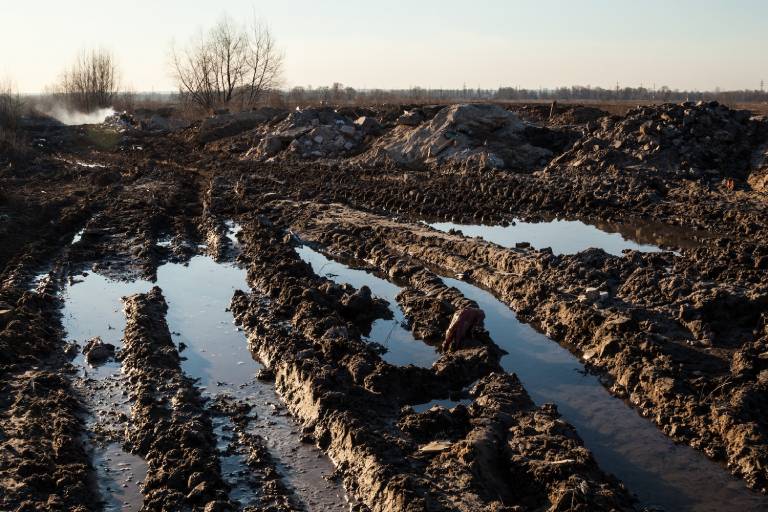Essential Practices for Working with Heavy Machinery

The construction industry is a vital sector, responsible for building the infrastructure that supports modern life. From towering skyscrapers to extensive road networks, the use of heavy machinery is central to these large-scale projects. However, with the prevalence of such powerful equipment comes significant risk. Ensuring safety on construction sites is not just a regulatory requirement but a moral imperative to protect workers and the public. This article will explore the importance of safety when working with heavy machinery, emphasising the need for robust safety protocols.
The Significance of Safety in Construction
Safety in the construction industry is paramount, as it directly impacts the lives of workers and the success of projects. Statistics reveal that construction remains one of the most hazardous industries, with a significant number of accidents and fatalities occurring annually. These incidents not only cause physical and emotional harm to workers but also lead to costly project delays, legal issues, and damage to a company’s reputation. Regulatory frameworks, such as those set by the Health and Safety Executive (HSE), establish essential standards to mitigate risks, emphasising the need for stringent safety practices across all construction activities.
Common Hazards Associated with Heavy Machinery
Heavy machinery, such as cranes, excavators, and bulldozers, is essential for large-scale construction projects. However, these powerful machines also pose significant risks. Common hazards include crush injuries, where workers can be caught between moving parts or pinned by machinery. Falls from heights, often from cranes or elevated equipment, are another frequent danger. Mechanical failures, whether due to poor maintenance or unexpected malfunctions, can lead to catastrophic accidents. Additionally, improper operation or inadequate training can result in collisions, tipping, or entanglement. Understanding these hazards is crucial for implementing effective safety measures to protect workers on construction sites.
Safety Protocols and Best Practices

Implementing robust safety protocols is essential to minimise risks when working with heavy machinery. Proper training and certification for machinery operators are the first line of defence, ensuring that only qualified individuals handle complex equipment. Routine maintenance and regular inspections are equally critical, preventing mechanical failures that could lead to accidents. The use of personal protective equipment (PPE) like hard hats, gloves, and high-visibility clothing plays a vital role in safeguarding workers from potential hazards. Additionally, strict adherence to safe operating procedures, including blind spot awareness and clear communication signals, is crucial for preventing accidents and ensuring a secure work environment.
The Role of Bog Mats in Ensuring Safety
Bog mats are specialised ground protection mats used in construction to create stable surfaces over soft or uneven terrain. Commonly made from timber or composite materials, these mats are essential for providing a secure foundation for heavy machinery, preventing it from sinking or becoming unstable on challenging ground. By distributing the weight of equipment evenly, bog mats reduce the risk of accidents caused by machinery tipping or getting stuck. To maximise safety, it is crucial to follow best practices, such as ensuring correct placement and regularly inspecting the mats for wear or damage, thereby maintaining a safe and stable worksite.
Creating a Safety Culture in Construction
Building a strong safety culture in construction is essential for reducing accidents and ensuring the well-being of workers. A safety-first mindset must be ingrained in every team member, emphasising that safety is a priority over speed or cost. Comprehensive training programs and continuous education on safety practices keep workers informed about the latest protocols and risks. Encouraging the reporting of safety concerns without fear of reprisal fosters an environment where potential hazards can be addressed promptly. Leadership plays a critical role by prioritising safety, setting an example, and consistently reinforcing the importance of safe practices throughout all levels of the organisation.
Technological Innovations Enhancing Safety

Advancements in technology are revolutionising safety in the construction industry. Innovations such as drones provide aerial surveillance, helping to identify hazards and monitor worksite conditions in real-time. Safety apps offer quick access to protocols, checklists, and reporting tools, improving communication and response times. Virtual reality (VR) training allows workers to practice safety scenarios in a controlled environment, enhancing their preparedness for real-world situations. These technologies, when integrated with traditional safety measures like PPE and regular inspections, create a more robust safety framework. Looking ahead, future trends may include AI-driven risk assessment tools and wearable devices that monitor worker health and safety in real-time.
Legal and Financial Implications of Neglecting Safety
Neglecting safety in construction can lead to severe legal and financial repercussions. Safety violations may result in hefty fines, legal actions, and even criminal charges, depending on the severity of the breach. Beyond the legal consequences, accidents can incur significant financial costs, including worker compensation, project delays, and increased insurance premiums. Additionally, the loss of reputation can lead to reduced business opportunities. Conversely, investing in comprehensive safety measures offers long-term benefits, such as reduced accident rates, lower insurance costs, and improved worker morale, ultimately leading to more efficient and profitable projects with fewer disruptions.
Safety in construction is paramount, especially when working with heavy machinery and using bog mats. These essential tools help create stable, secure work environments, but they require rigorous safety protocols to be effective. Continuous vigilance, regular training, and strict adherence to safety procedures are critical to preventing accidents and ensuring the well-being of all workers on site. As construction evolves, companies must prioritise safety by investing in ongoing education, adopting new technologies, and fostering a culture where safety is everyone’s responsibility. By doing so, they can protect their workforce, enhance productivity, and ultimately achieve long-term success.




